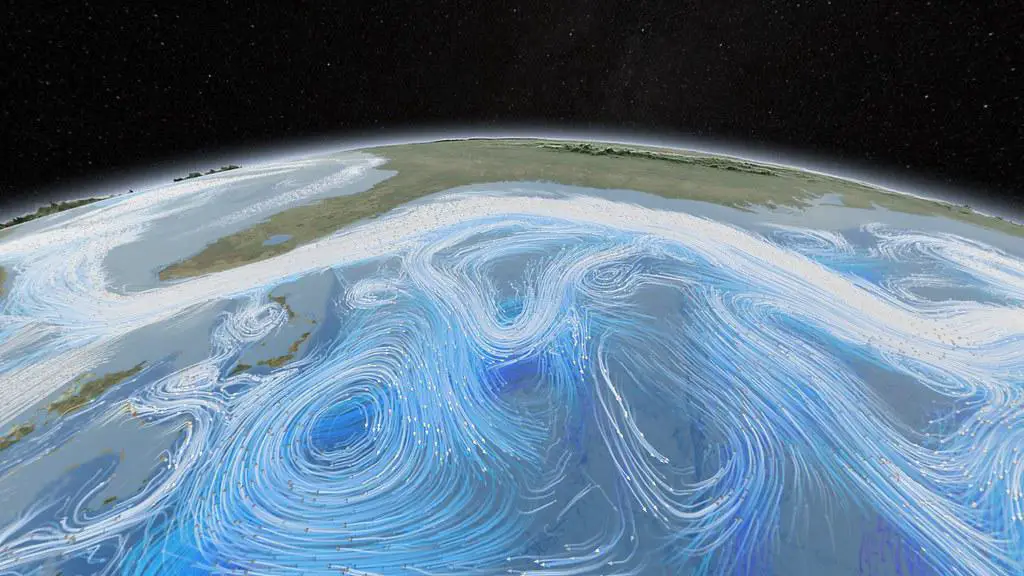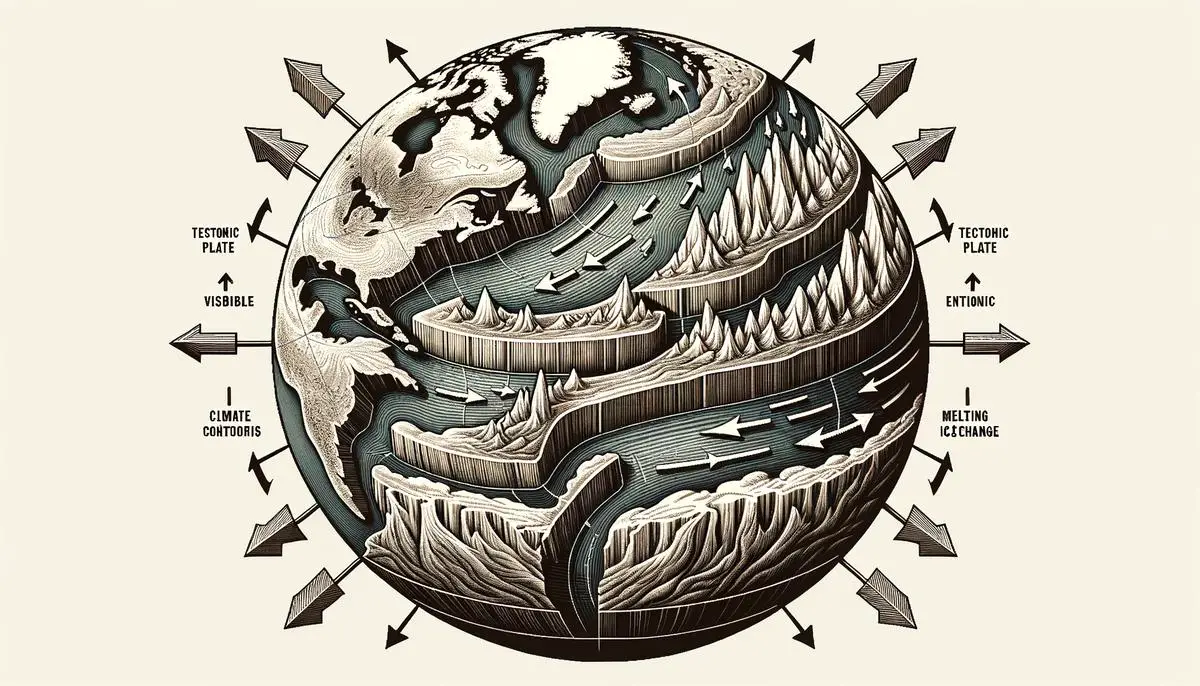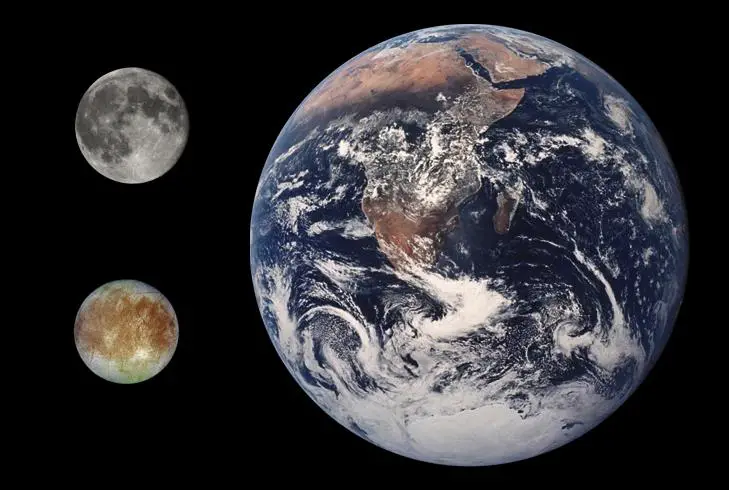Earth's Rotation
Earth's rotation creates the daily cycle of day and night, with the equator spinning at around 1,037 miles per hour. This defines a standard 24-hour day, though we don't feel this motion in our daily lives. The equator moves faster than higher latitudes due to Earth's larger circumference there.
This swift rotation aids rocket launches. Sites like Florida, closer to the equator, use Earth's rotation to gain additional speed, boosting the journey into space and saving fuel and time.
Satellites move in sync with Earth's rotation, maintaining their position over a fixed point for communications and weather monitoring. Any fluctuation in Earth's rotation speed, although rare, could require recalibration of these satellite paths.
The rotation's influence decreases towards the poles, where the spin is almost imperceptible. This slow spin at high latitudes is crucial for understanding global wind patterns and jet streams.
Earth's spinning also has a minor effect on weight due to centrifugal force, making a person about 0.3% lighter at the equator compared to the poles.
Though generally constant, Earth's rotational speed has minute variations due to atmospheric conditions and other factors. These changes can complicate precise timekeeping and technological systems relying on exact time measurements, though the difference remains tiny, affecting only milliseconds over long periods.
Over millions of years, the Moon's gravitational pull has gradually slowed Earth's rotation, lengthening days from about 19 hours one billion years ago to the current 24-hour period.

Orbital Speed Around the Sun
Earth orbits the Sun at approximately 67,100 miles per hour, completing a full revolution in about 365 days. This journey orchestrates our seasons. Earth's orbital speed balances the Sun's gravitational pull and the planet's inertia, maintaining a stable path.
Within our solar system, Earth's velocity is moderate. Consider the range of orbital speeds:
- Mercury: 105,000 miles per hour
- Earth: 67,100 miles per hour
- Neptune: 12,200 miles per hour
These differing speeds illustrate how gravity and distance define celestial motion.
Our solar system itself orbits the center of the Milky Way galaxy at about 447,000 miles per hour, part of a larger cosmic dance involving countless galaxies.
This constant movement, though imperceptible in daily life, connects our world to the broader universe, influencing phenomena we experience and shaping the environment to which life on Earth has adapted.

Impact of Earth's Spin on Climate and Environment
Earth's rotation significantly influences our climate and environment. The centrifugal forces generated by this spin impact climatic patterns and global conditions.
The rotation helps distribute solar energy across the planet. Uneven heating of Earth by the Sun creates temperature variations that drive wind and ocean currents, which in turn guide weather systems and affect rainfall distribution, temperature, and environmental conditions worldwide.
The Coriolis effect, a direct result of Earth's motion, causes the deflection of winds and ocean currents. This phenomenon generates:
- Spiral patterns in large-scale movements like trade winds
- Ocean gyres
- Rotation direction of hurricanes in different hemispheres
Changes in Earth's rotational speed, though subtle and gradual, could have significant consequences:
- A faster spin would increase the equatorial bulge, potentially leading to sea level changes.
- Slower rotation could affect water distribution differently, altering sea levels at higher latitudes.
Such changes could impact temperature variations, climate patterns, and even plant and animal life cycles.
Over geological time scales, these variations might influence cyclical ice ages or alterations in global climate patterns due to shifts in wind currents and ocean circulation. Understanding these factors is crucial for comprehending past climate changes and predicting future environmental conditions.

Changes in Earth's Rotational Speed
Earth's rotation, while seemingly constant, experiences subtle changes over time due to various factors:
- Tectonic activities: Shifts in Earth's crust, whether through continental drift or earthquakes, can alter the planet's mass distribution, minimally influencing rotation speed.
- Climate change effects: Melting ice caps and glaciers redistribute mass from poles to equator, slightly slowing Earth's spin.
These changes pose challenges for precise timekeeping. Atomic clocks, which measure time based on atomic oscillations, have revealed discrepancies with astronomical time. To address this, scientists implement leap seconds, periodically adjusting atomic time to synchronize with astronomical time.
Recent discussions have considered the potential need for a negative leap second to account for Earth's possible faster spin, though this remains under scrutiny due to technological complexities.
"As time goes on, there is a gradual divergence between the time of atomic clocks and the time measured by astronomy, that is, by the position of Earth or the moon and stars," says Judah Levine, a physicist in the time and frequency division of the National Institute of Standards and Technology.
Scientists track Earth's motions using satellite observations and laser ranging techniques, providing insights into both natural geophysical processes and human-induced changes affecting rotation.
Understanding and responding to these minute shifts is crucial for maintaining accurate timekeeping that supports global navigation systems, financial trading platforms, and other technologies reliant on precise time measurements.

Earth's rotation, while often overlooked, plays a crucial role in shaping our world. Its influence extends beyond timekeeping, affecting climate patterns and technological systems. As we continue to study these subtle yet significant impacts, our understanding of Earth's dynamic nature deepens, highlighting the intricate connections between our planet's movements and the broader universe.
- Witold Fraczek. Interview with ESRI analyst. 2023.
- Sten Odenwald. Interview with NASA astronomer. 2023.
- Levine J. Time and frequency division, National Institute of Standards and Technology. 2023.
![]()
